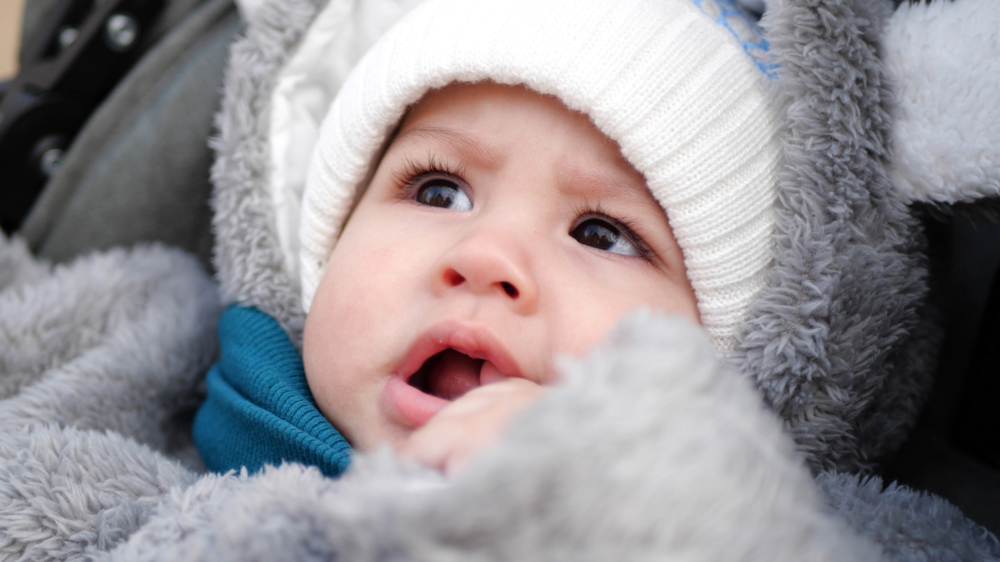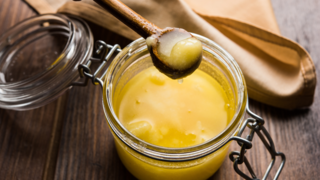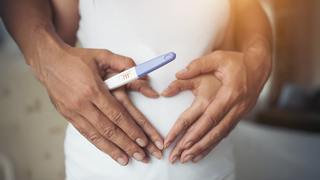In this article:
Knowing these signs early is really important, as dehydration can lead to serious health problems if not treated promptly.
What is Dehydration in Toddlers?
Dehydration happens when your toddler’s body loses more water than it takes in. This disrupts normal body functions because water is essential for processes like regulating temperature and supporting digestion. Toddlers are particularly at risk because their smaller bodies have less fluid reserves, meaning even a small loss can tip the balance. Common situations like illness or hot weather can make dehydration more likely, so staying alert to the signs is crucial.Signs and Symptoms of Dehydration in Toddlers
Noticing dehydration early can prevent it from becoming serious. You’ll need to watch for physical and behavioural clues in your toddler. These are the signs to look for:- Less frequent urination: If your toddler hasn’t had a wet nappy for three hours or longer, or produces only one or two wet nappies in 24 hours. Their urine may also appear darker, yellower, or more concentrated than usual.
- No tears when crying: A dehydrated toddler may cry without producing tears, which is a clear sign their body lacks enough fluid.
- Dry mouth and cracked lips: Check for a sticky or dry mouth, dry lips, or dry mucus on their tongue or inside their mouth. These are early indicators of thirst and dehydration.
- Sunken eyes or fontanelle: The eyes may look sunken into their sockets, and in younger toddlers, the soft spot on their head (fontanelle) may appear sunken.
- Lethargy or fussiness: Your toddler might seem unusually tired, less active, or irritable. They may show disinterest in play or act fussy when encouraged to do something.
- Fast breathing or rapid heart rate: These can signal the body’s struggle to cope with fluid loss.
- Cool or discoloured hands and feet: In severe cases, your toddler’s hands and feet may feel unusually cool or look mottled.
- Wrinkled skin: Severe dehydration can cause the skin to appear wrinkled, a sign that the body is critically low on fluids.
Causes of Dehydration in Toddlers
Several factors can lead to fluid loss in toddlers:- Diarrhoea: This is the leading cause of dehydration, often triggered by viral infections like rotavirus, bacterial infections like Salmonella, or parasitic infections like Giardia lamblia. Loose stools cause rapid water loss.
- Vomiting: Like diarrhoea, vomiting quickly depletes fluid reserves, especially during stomach bugs.
- Fever: High body temperature increases fluid loss through sweating and makes dehydration more likely.
- Hot and humid weather: Excessive sweating due to heat or physical activity can lead to dehydration.
- Not drinking enough water: Some toddlers simply don’t drink enough, whether due to being too busy playing or refusing fluids.
- Chronic illnesses: Conditions like diabetes, celiac disease, cystic fibrosis, or bowel disorders can increase the risk of dehydration.
- Medications: Certain medications may contribute to dehydration by causing fluid loss as a side effect.
When to Seek Medical Help
Some situations of dehydration require urgent medical attention. Take your toddler to a doctor or hospital if you notice:- Severe symptoms: Extreme fussiness, lethargy, difficulty waking up, or a dry mouth that persists despite fluid intake.
- No urination for 18 to 24 hours: This indicates severe dehydration, as the body is conserving what little fluid remains.
- Persistent vomiting or diarrhoea: Professional help is needed if vomiting lasts more than 24 hours or diarrhoea continues beyond a day.
- Bloody or unusual stools: Stools that are bloody, greenish, or resemble coffee grounds signal a serious issue.
- High fever: A temperature of 102°F or higher requires medical evaluation.
- Abdominal pain or swollen tummy: These could indicate complications beyond dehydration.
- Sunken fontanelle or wrinkled skin: These are signs of severe dehydration that need immediate treatment, often with intravenous (IV) fluids.
How Doctors Diagnose Dehydration
A doctor will assess dehydration by reviewing your child’s medical history, discussing symptoms with you, and performing a physical exam. To pinpoint the cause and severity, they may order tests like:- Blood tests: These check for infections, electrolyte imbalances (like sodium and potassium levels), or changes caused by vomiting and diarrhoea.
- Urine tests: These confirm dehydration by detecting concentrated urine or check for bladder infections or uncontrolled diabetes.
- Stool analysis: This identifies infections causing diarrhoea.
- Chest X-ray or lumbar puncture: These are used in rare cases to investigate underlying infections.
- Rotavirus testing: This checks for a common viral cause of diarrhoea.
Treating Dehydration in Toddlers
Treating dehydration focuses on replacing lost fluids and addressing the underlying cause. Most cases can be managed at home, but severe dehydration may require hospital care. A few of the treatment options include:- Oral rehydration salts (ORS): These are specially formulated drinks or powders you mix with water to restore fluids and electrolytes. You can find them at pharmacies or supermarkets. Give one or two teaspoons every few minutes over four hours. The World Health Organization (WHO) suggests the approximate amount of ORS required in millilitres can be calculated by multiplying the child’s weight in kilograms by 75. If vomiting is an issue, offer small sips frequently.
- Other hydrating options: If your toddler refuses ORS, try clear soups or ice chips. Plain water is also fine, but avoid sugary sports drinks or fruit juices, as they can worsen dehydration or diarrhoea. If your toddler is breastfeeding, continue nursing alongside ORS.
- Gradual refeeding: You can reintroduce foods once vomiting stops for at least four hours. Start with bland options like bananas, rice, pears, dry toast, or saltine crackers. These are gentle on the stomach and help with recovery. Avoid milk temporarily if diarrhoea is present, as it can worsen loose stools.
- IV fluids: For severe cases, such as when your toddler is semi-conscious or unable to keep fluids down, doctors may administer IV fluids in a hospital to quickly restore hydration.
- Medications: Antibiotics or antivirals are rarely needed but may be prescribed for specific infections.
Home Remedies to Support Recovery
You can use these home remedies to help your toddler recover alongside medical treatment:- Offer water-rich foods: Foods like watermelon, bananas, or diluted fruit purees provide hydration. Vegetable or chicken broth and yoghurt are also good choices.
- Encourage frequent sips of water: Offer water regularly, especially on hot days or during illness. If your toddler dislikes plain water, add a splash of lime or mint leaves for flavour.
- Continue breastfeeding: If your toddler is breastfed and has diarrhoea, keep nursing, as breast milk provides hydration and nutrients.
- Dilute formula if needed: For formula-fed toddlers with diarrhoea, mix formula with twice the usual amount of water for a few feeds to make it easier to digest.
Preventing Dehydration in Toddlers
Prevention is the best way to keep your toddler safe from dehydration. These are practical steps to make sure they stay hydrated:- Ensure adequate fluid intake: Toddlers aged 1 to 3 need about 4 cups (around 1 litre) of fluids daily, including water and milk. Offer water with meals and bring a sippy cup or water bottle on outings. Increase water intake by offering sips two to three times daily on hot days.
- Limit juice: Dilute juice with water to reduce sugar. Opt for 100 per cent fruit juice, which is gentler on the stomach.
- Dress appropriately: In hot weather, dress your toddler in lightweight, light-coloured, loose-fitting clothes and a wide-brimmed hat to reduce sweating and overheating.
- Maintain hygiene: Teach your toddler to wash their hands before and after meals and after playing outside to prevent infections that cause diarrhoea or vomiting.
- Avoid peak heat: Limit outdoor play during the hottest parts of the day (10 a.m. to 4 p.m.). Opt for early morning or late afternoon playtime and seek shade when needed.
FAQs on How To Know If Your Toddler Is Dehydrated
- How can I tell if my toddler is dehydrated?
Look for signs like fewer wet nappies, dry mouth, no tears when crying, sunken eyes, tiredness, or crankiness. These early clues can help you act before it gets serious. - What should I do first if I suspect my toddler is dehydrated?
Start with small, frequent sips of oral rehydration solution (ORS). If they refuse that, offer plain water, clear soup, or ice chips. - Can dehydration be prevented in toddlers?
Yes. Offer water regularly, especially during hot weather or illness. Dress your toddler appropriately for the weather and maintain hygiene to reduce infection risks.






